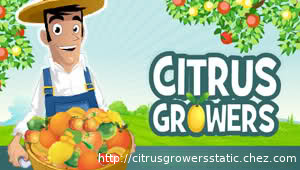http://www.gainesville.com/article/20100320/ARTICLES/100319346/1004
Caring for cold-damaged citrus
By David Holmes
Columnist
Published: Saturday, March 20, 2010 at 6:01 a.m.
Last Modified: Friday, March 19, 2010 at 11:47 p.m.
A couple years ago, when climatically speaking, everything went right, I picked citrus off trees in my backyard from late November through late August.
As the Extension Service actively promotes consumption of fruit and vegetables to enhance health and longevity, and because no fruit or vegetable can be fresher than that which you produce yourself, I found this source of fruit to be particularly satisfying. Following the prolonged cold snap north central Florida experienced this year from early to mid-January, several people who know I have citrus and, OK, I admit it a few palms I shouldn't have, inquired whether I had lost any trees. My response has been the same not so far, but for many things, we won't know until mid to late April the extent of this cold damage.
About two weeks after the January cold snap, I was delighted to see my citrus trees drop all their leaves. This is a good sign, for it indicates new buds are emerging and are pushing the old leaves off the tree. Close examination revealed small green buds on many not all, but many of the branches. The thought also occurred to me that the intense cold the region experienced had to be hard on the pysllid insect population that is responsible for the spread of Citrus Greening, a disease that is presently a major threat to both the commercial and dooryard citrus industry across the state.
It doesn't make me feel a bit grieved to think these pests suffered during the cold and, hopefully, their populations have been burnt back severely. One thing for sure, there won't be many citrus leaves for them to consume this spring.
If you have citrus trees, there are several items that should be addressed now to help trees recover and to prevent headaches as the summer progresses.
First, if your trees have dropped leaves, these should be raked and removed from the property. Old leaves are a harbinger for diseases and heavy spring rains can spread disease spores from the leaves up into the canopy. While you won't be able to remove every leaf, get as many as possible, bag them and send them to the landfill.
Next, trees should be starting to leaf out. You'll probably notice that some, maybe several, branches have been killed outright by the cold weather and won't have any evidence of new leaves emerging. In many cases, the end of a forked branch may have dead wood, while the other half of the fork is alive. Now, while leaves are small, is a good time to prune out limbs that are obviously dead.
Removal of these branches is important to prevent melanose, a disease that spreads from dead wood. Again, do not submit these branches to your compost, but remove them from the site.
Prior to the first flush of growth which generally occurs at the end of February is the time to make the first fertilizer application of the year. If you have not done so already, make an application of 6-6-6 fertilizer (select an organic form if available) at a rate of 6 pounds of fertilizer for trees that are of bearing age.
In late May, and again in early September, make a similar application. Remember, it is important to place fertilizer where roots can actively uptake the material; as a rule of thumb, fertilize an area twice the diameter of the tree canopy.
Following two seasons of cold weather, even mature citrus trees are stressed, so it is important to do what we can to return trees to health. Generally, rains have been fairly well spaced as we have begun 2010, but windy March conditions quickly dry out topsoil where many roots are located.
One expects dry conditions in May, and combined with hot temperatures, this can be very stressful for trees. Over the next couple months, dooryard fruit producers should monitor rainfall, wind and temperatures carefully and should supplement irrigation on citrus as needed.
The University of Florida has an excellent publication for dooryard citrus producers, Your Florida Dooryard Citrus Guide, SP-178. It may be obtained online at
www.ifasbooks.com or at 800-226-1764.
David Holmes is Marion County extension director. Contact him at david.holmes@marioncountyfl.org. 














